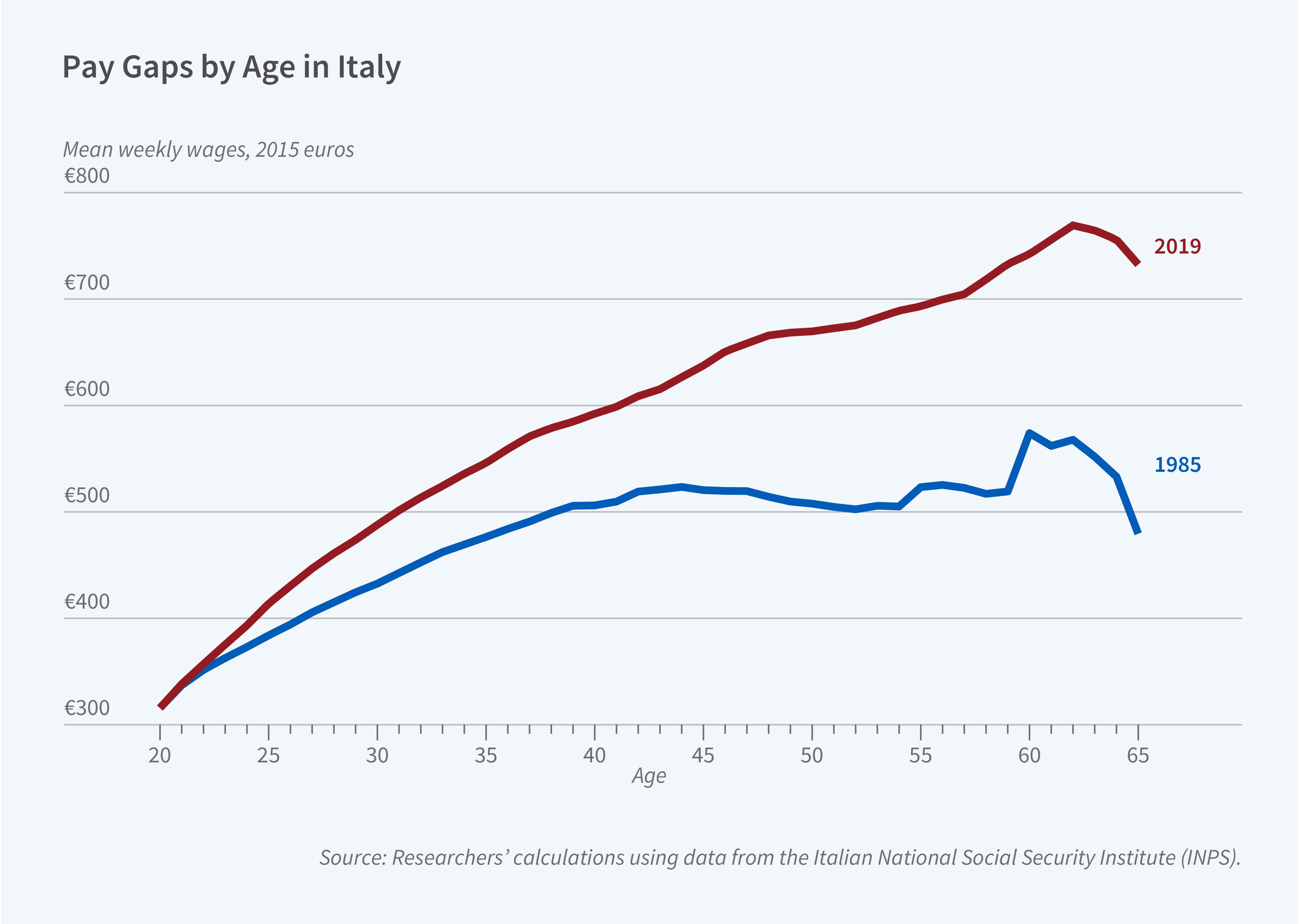Pay Trajectories for Younger and Older Workers in Europe

As the workforce in Europe and the US has grown older, the average wages of older workers have risen more rapidly than those of their younger colleagues. This seems inconsistent with a simple supply-and-demand analysis, which would suggest that as the supply of older workers grows, their wages should fall; it raises the question of what other factors could be responsible for the growing age-pay gap.
In Countries for Old Men: An Analysis of the Age-Pay Gap (NBER Working Paper 32340), Nicola Bianchi and Matteo Paradisi analyze administrative data covering 38 million workers at 3.7 million firms in Italy and Germany, along with survey data on an additional 6.6 million workers from 14 high-income countries, to test whether the presence of older workers in a firm has negative career spillover effects on its younger workers.
The difference in the rates of wage growth between those under 35 and those over 55 is greater in older, larger firms with slower employment growth.
The researchers document that the wage rate growth of younger workers has slowed, and that these workers have struggled to secure more senior positions. In Italy, the likelihood that workers under 35 are in the top quarter of earners declined by 34 percent between 1985 and 2019, while the probability of being in the top quartile of earners rose for those over 55 by roughly the same amount. During the same period, the share of managerial roles held by workers under 35 fell from 8 to 3 percent, while the share held by workers over 55 rose from 12 to 28 percent. These divergent trends, rather than changes in the level of wages paid to workers at different ranks, are responsible for most of the growing age-pay gap. Young workers tend to enter the labor market with lower wages than those of older workers, and the typical wage growth experienced by workers during the first few years of their careers has slowed over time.
The age-pay gap has grown more in firms that face constraints on adding higher-ranked positions to their organizational hierarchies: namely older, larger firms with less employment growth. Moreover, the share of firms that fit this description has expanded over time. The pay gap between younger and older workers has expanded more at high-paying than at low-paying firms, while younger workers have also become less likely to secure positions at these firms. Thus, both within-firm and across-firm factors have contributed to the growing pay gap. A rising fraction of older workers work at firms in the top decile of mean pay, and a declining fraction work at firms in the bottom decile.
— Abigail Hiller
The realization of the present article was possible thanks to the sponsorship of the VisitINPS Scholars program.


